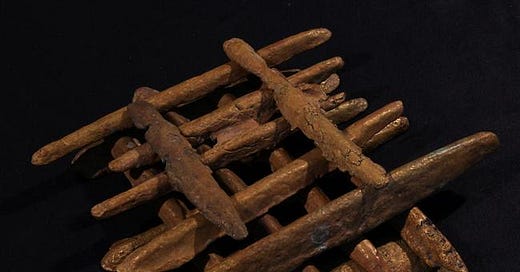This is the seventh chapter of my manuscript book called Atlantis.
Plato continues his description of the economy of Atlantis. He describes several things that could be used to identify the location.
Orichalcum
Plato describes a metal called orichalcum which is an alloy of copper and gold.
In the first place, they dug out of the earth whatever was to be found there, solid as well as fusile, and that which is now only a name and was then something more than a name, orichalcum, was dug out of the earth in many parts of the island, being more precious in those days than anything except gold.
Even today, the copper mined in the region of Peru, Bolivia, and Chile is found naturally alloyed with gold. The natives of that region used a process to make beautiful images from this metal. They would cast the metal to the desired shape and then treat it with an acid. The acid removed the copper atoms from the surface, leaving a shining surface of pure gold. Then they would polish the surface until it was gleaming.
Plato described the temple in the city of Atlantis as, “glinting with the red light of orichalcum.”
While historians knew about orichalcum from Greek legends such as Atlantis, it had never been found in the Mediterranean until a shipwreck was discovered in 2014. This wreck, off the coast of Sicily, sank in the seventh century BC, and contained a cargo of gold ingots which were alloyed with copper. (figure 12)
.
In the region of Peru and Bolivia many artifacts of this alloy have been discovered, as seen in figure 13.
Keep reading with a 7-day free trial
Subscribe to Creation History to keep reading this post and get 7 days of free access to the full post archives.






